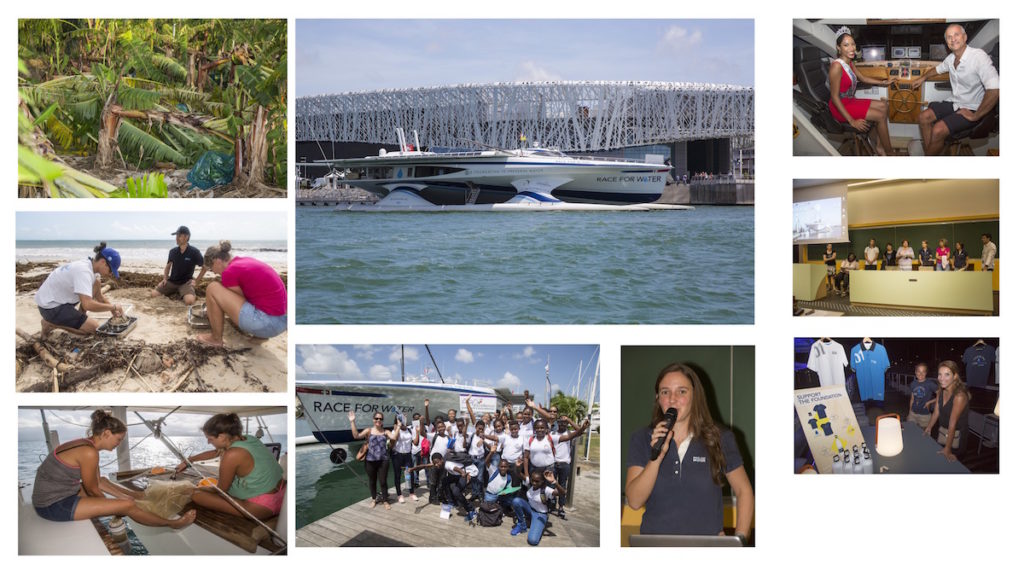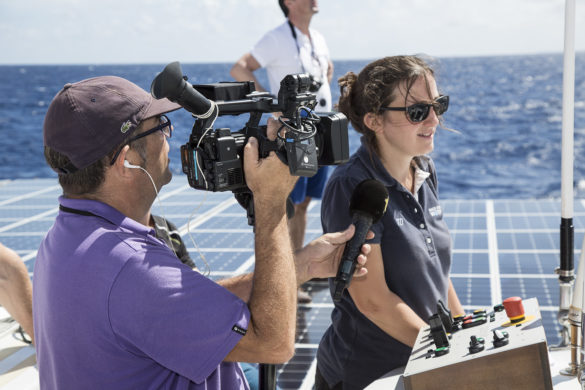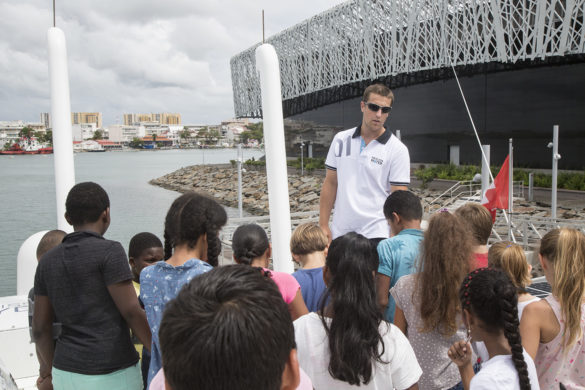After setting sail from Lorient on 9 April 2017 for a 5-year circumnavigation of the globe at the service of the campaign to combat plastic pollution of the oceans, Race for Water, a 100% self-sufficient vessel powered by the sun and hydrogen, made landfall in Guadeloupe on Thursday 21 September 2017 at the Mémorial ACTe in Pointe-à-Pitre.
Warmly welcomed by the Region, she was to make a 4-month stopover there, the longest ever for the Race for Water Foundation’s Ambassador catamaran. The arrival was a little out of sync with the initial programme after having to adapt the boat’s course due to the passage of Hurricane Maria. During this Guadeloupian stopover, there were various programme highlights associated with the issue of plastic pollution: conference, workshop, meetings, school visits and a scientific mission in the waters of the archipelago.
Choice moments captured in images for this stopover:
Meeting eco-citizen children
With the sun barely surfaced in Guadeloupe, Peter loads his camera, video camera and tripod into the boot of the car. After over an hour’s drive, we arrive in St-François, on the so-called Grande-Terre section of the island, to track down a very special class..
The imprint we’ve left
On making landfall on an island or a shore, the Race for Water Odyssey teams expend a great deal of energy, raise awareness among the local youngsters, play host to local protagonists and open up discussions about plastic pollution of the oceans so that a series of solutions can be geared up specially for them. However, what’s left once we cast off?

THE ATLANTIC LOW-DOWN
This session in Guadeloupe heralded the end of the Atlantic stopovers; here are the numbers:
– 1,400 children aboard the vessel to raise their awareness about the plastic pollution of the oceans
– Over 100 local protagonists (government, manufacturers and NGOs) invited aboard
– 1,000 people invited to public conferences organised in universities and the like
– 15 researchers of 6 different nationalities for 3 international projects
– 443-million individuals potentially impacted by the media coverage

